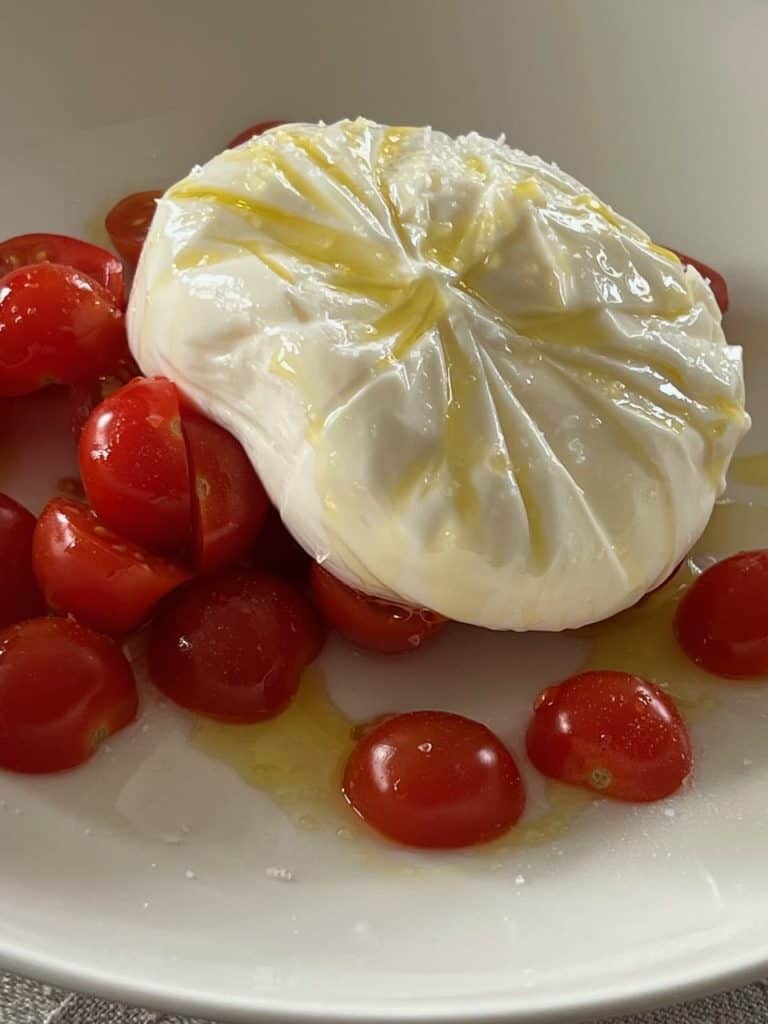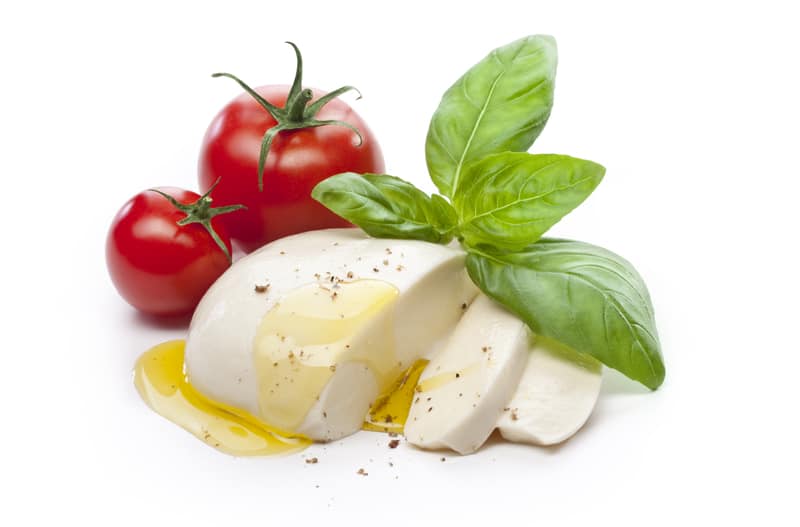
It’s this time of the year, it’s Mozzarella time. Sun’s shining, late April and the temperature has started to rise. Mother Earth is waking up from the winter hibernation. Flowers are popping up adding colour to this for the moment otherwise rather grey world. It’s a wonderful time. To celebarte this I will recomend an Insalata caprese, and if you don’t know how to make it, here’s a recipe. But Mozzarella cheese is so much more than just this cheese, varying in shape, size and texture, but common to all are soft and tangy flavours.
Mozzarella – the original
Mozzarella is a fresh cheese, pasta filata style, aka pulled curd, originally made with water buffalo’s milk and from the Campania, the area surrounding Naples. This is perhaps one of the most famous cheeses of the world. Today made all over Italy, of cow’s milk though, but only Mozzarella di Bufala Campana holds a PDO (Protected Designation of Origin – DOP in Italian). So that’s the original. Otherwise the cheese can be made anywhere in Italy from buffalo or any style of cow’s milk. As it is, it is made more or less all over the world, but thy are all copies of course.

Mozzarella Fior di Latte
In Italy this might be the most famous, but not necessarily so in the rest of the world. This is a traditional Mozzarella made with full fat cow’s milk, and only that. As far as I know there is a variety of Fior di latte from the Southern Apennines that is about to get its PDO. Originated in the Southern Apennines which is part of Campania. Some will say the Fior di latte has a more subtle flavour than traditional Mozzarella and with a softer texture. In many instances favoured by restaurants while the traditional consumer stick to the supermarket variants, whatever they list.
Then there is Burrata
What is burrata I was asked the other day. The simple explanation is that it is a Mozzarella filled with stracciatella. So what is stracciatella? That is shredded mozzarella cheese soaked in cream, making a rather liquid mass. So when you cut the burrata the liquid will float over your plate. Very sensual. Serve it the way it is shown in the picture atop. Burrata may, as with traditional mozzarella be made with cow’s milk or buffalo’s milk, but the best (and most expensive) is Burrata di Bufala Campana DOP. Originally from Puglia as a matter of fact and invented during the 1920s, so only a hundred years old that tradition.
Bocconcini – mouthfuls
That’s literally what it means. They are small Mozzarella balls perfect for salads with perhaps San Marzano tomatoes, they’re native to Naples, and real extra Virgin olive oil. Looks much better in a salad than the traditional sliced mozzarella cheese.
Finally the knots – Nodini
The pasta filata means as mentioned pulled or stretched curd. In that way they can be formed any way you like, even though the most common is the round shape. The variant called Nodini is formed as a small knot. There is a variant of this called braided mozzarella. Very decorative, but otherwise traditional mozzarella. Treccia di Mozzarella would be the thing to look for when in Italy, or Mozzarella intrecciata. Now you should be covered.
What about the dried mozzarella?
Mainly for cooking purposes, especially on pizza, though quite a few pizza restaurants prefer the fresh one in brine, at least if they care about their pizzas. All industrial pizzas with mozzarella cheese is made with this dried variant. They may come in cylinders and be sliced onto the pizza or shredded. You’ll find bags of shredded mozzarella in your local grocery a well. Sometimes it comes in handy.
Raw or pasteurised?
Most of the variants are made with pasteurised milk, but it is far from impossible to get hold of raw milk mozzarella or burrata. For the burrata the stracciatella will be pasteurised irrespective of how the milk for the burrata is treated. You just have to look for latte crudo on the label.
